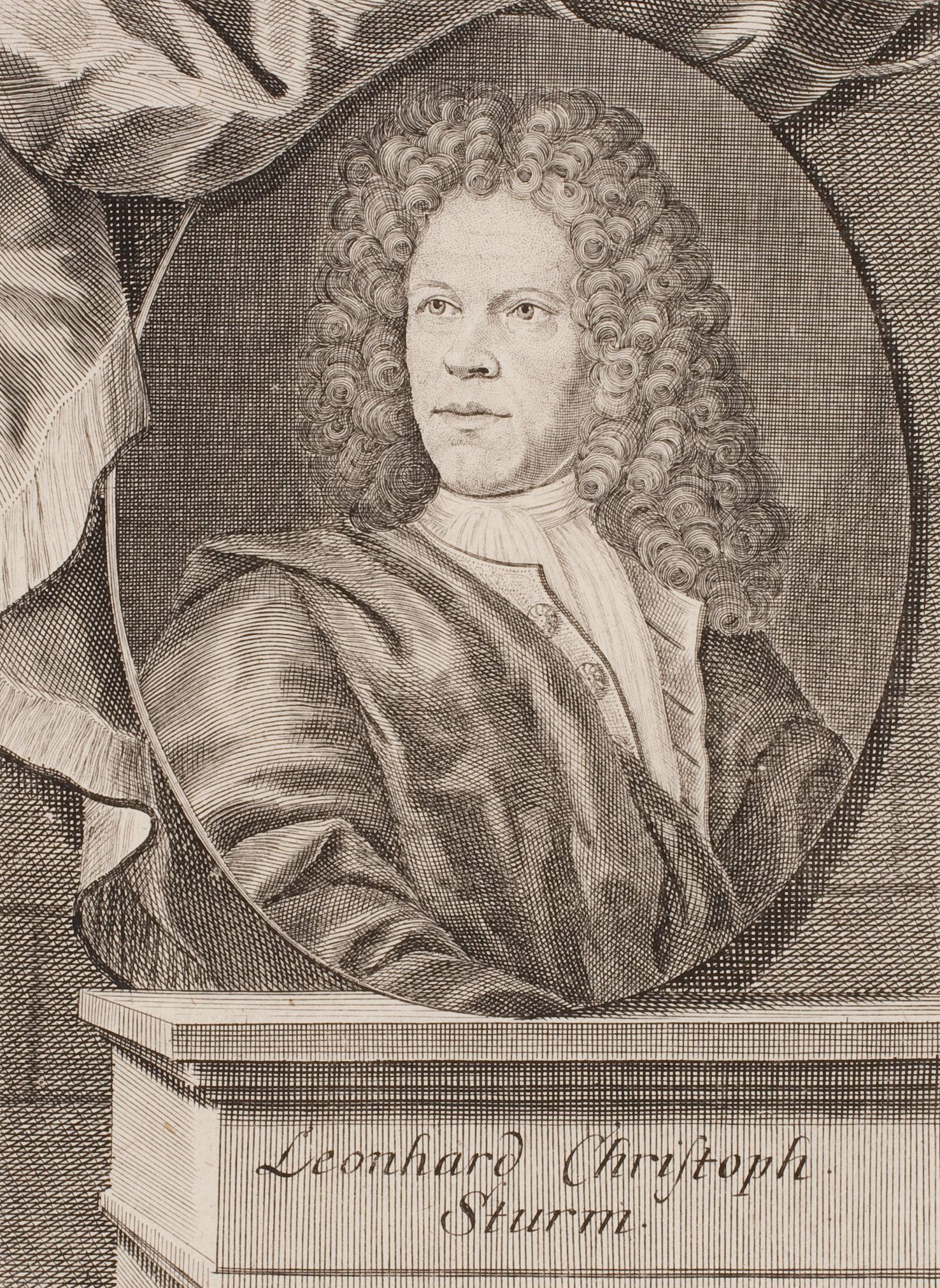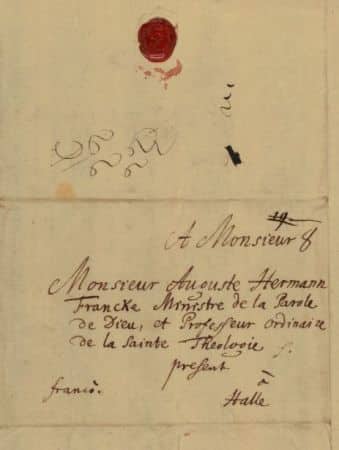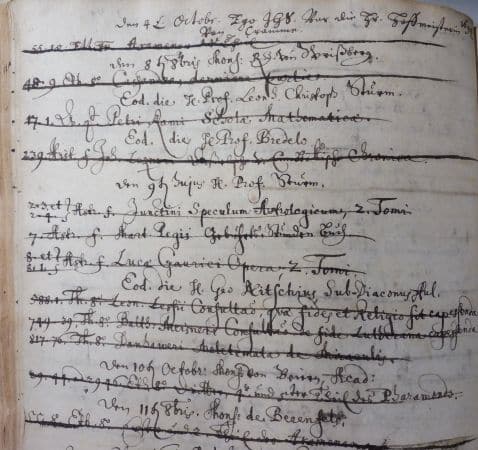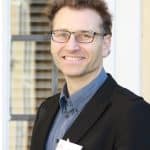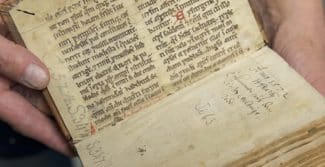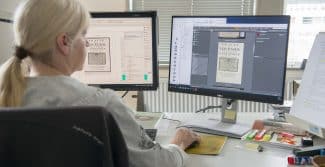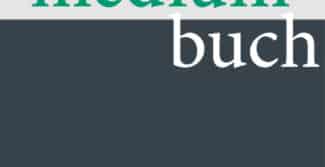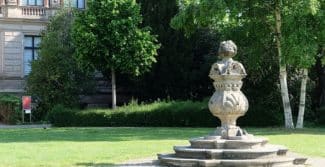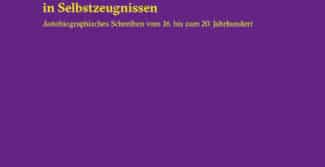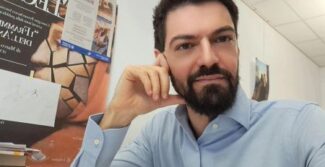The Marbach-Weimar-Wolfenbüttel Research Association (MWW) project ‘Intellectual Networks’ has set out to reconstruct the network in which Sturm was active, comprising scholars, professional contacts and associates dealing with the practical concerns of faith.
5 May 2021
In 1694 the 25-year-old Sturm was appointed to the chair of mathematics at the Ritterakademie Rudolph-Antoniana (Rudolph-Antoniana Knight Academy), which had become vacant. His duties included lecturing in civilian and military architecture, which at that time was considered a branch of applied mathematics.
Sturm felt ambivalent about his post in Wolfenbüttel, as he remarked in a letter to August Hermann Francke dated 13 June 1701: ‘I would like to quietly bide my time withal in anticipation of acts of divine providence, to which I may indeed give thanks for the comfortable salary, pleasant existence and gracious masters I have here and for the fact that I have nothing to complain about other than the lack of company pleasing to God and of conversation to pass the time.’
The ambitious young professor thus felt intellectually rather under-challenged in this minor seat of ducal power. What is more, he disliked the religious censorship that had been in force since the 1692 edict on Pietism and applied to all public employees – including him. At the same time, Wolfenbüttel represented a lucky opportunity for him, since it ensured a steady supply of books and scientific instruments for teaching and for his own use, thanks to the famous ducal library.
The loan records which the Wolfenbüttel library has kept consistently since 1664 reveal to the day exactly when a particular user borrowed a book. During his time in Wolfenbüttel, Sturm was one of the most frequent and grateful users of the Bibliotheca Augusta, which was also an academic library for as long as the Ritterakademie existed (1687−1713). Both as a professor at the ducal academy and as a private individual, he borrowed a total of 391 books, some of them several times. Curiously, he did not in fact borrow many books on mathematics, perhaps for the simple reason that many of the relevant works were already in his private library. He borrowed a particularly large number of books grouped under ‘architecture, geometry and the art of engineering’ – among them many classics – and ‘militaria’, including pertinent books on how to build fortresses. The share of books on theology is likewise significant, although he did not begin to study religion intensively until his final three years in Wolfenbüttel. Finally, Sturm used the opportunity to borrow a terrestrial globe as well as astronomical and geometrical instruments from the ducal collection for use in his teaching at the academy.
Only a rough estimate can be made of the number of books Sturm owned privately during his stay in Wolfenbüttel. The 20-page inventory that has been preserved in the archive of the Herzog August Bibliothek (shelf mark BA I 673) records the holdings in his private library at the end of his life. When he died at the age of 50 in 1719 in Blankenburg in the Harz mountains, his collection boasted as many as 500 individual titles and included polemic pamphlets, books of plates, maps and dissertations as well as illustrated books and anthologies.
Most of the items in the inventory belong in the ‘scholarly literature’ section with a focus on ‘architecture / civil and military arts of construction and engineering’ and ‘astronomy/mathematics/geometry’. They include books by well-known authors in the disciplines mentioned as well as works on the same subjects by Sturm himself. In addition, the inventory lists titles that can be categorised in the group ‘geography/topography/landscape and travel descriptions’. There are 140 theological titles, including leading lights of the Pietist movement as well as texts by other important authors, some of them chiliastic. In this section, too, there are texts penned by Sturm, in which he struggles to find the correct interpretation of the divine revelation, sometimes resorting to mathematical methods to prove his point. Finally, the entries on the last three pages of the inventory list a rather fine little collection of instruments. There are technical drawing tools and optical instruments, including ‘a large and a small speculum causticum’ (burning glass), ‘a hollow mirror’ and ‘a microscope in wood’.
Sturm was enormously productive. He wrote at least 40 tracts on architectural theory alongside theological texts, disputations and contributions to mathematics, museology (before it existed as a science) and the education of the nobility. Although Sturm held several posts as a mathematician and director of construction work, he realised very few building projects himself. He was aware of this deficit and mentions it with regret several times in his writings. Also remarkable is his fervent appetite for theological discussions and publications, which he devoted himself to in parallel to his other work, exhibiting an equal degree of knowledge about the subject. Sturm’s spirited nature, which responded with indignation and existential alarm to what he perceived as the world’s lax attitude towards religion, can also be observed in his correspondence with contemporaries, including Gottfried Wilhelm Leibniz, August Hermann Francke and Gottfried Kirch (1639–1710).
Sturm’s mode of expression testifies to a conflicted character. He proclaims his grateful humility before God and cites the creator to explain his activities and abilities (‘For it is certain that a human being has nothing he calls his own that he has not received from God’), only in the same moment to boast of his individual competence, which often sounds contradictory, if not indeed presumptuous (‘After I have indisputably shown the best manner of fortification’). While the tone of his writings is certainly polite and distinguished, cloaked in modesty and emphasising his own fallibility (‘which is why I would politely ask the reader to kindly communicate his misgivings to me … I do not consider it a disgrace at all to be a human being – that is, to err’), the querulous and opinionated side of him that sometimes breaks through has a jarring effect: ‘Now this judgement [he is referring here to a counter-argument, probably from the pen of the famous Halle professor of mathematics and philosophy Christian Wolff] is apparently of such a nature that it cannot make the slightest impact either on me or my cause’.
While Sturm certainly made a name for himself with his ideas about building techniques and his military and non-military designs as well as his interventions in questions of faith, his views were not uncontroversial. His intensive use of the public library in Wolfenbüttel, his privately owned books and his own extensive oeuvre, including accurate technical drawings, are testament to Sturm’s position as an architectural theorist, a cultural technician and querulous public figure of some rank in the early 18th century.
